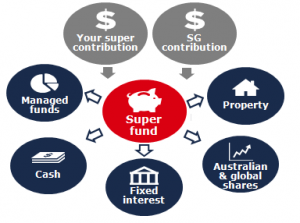You’ve worked hard, diligently building up your super balance and you’re looking forward to retiring early. To reach that milestone, you will need to understand when you can start drawing from your super.
The Australian government puts age and other restrictions on when you are able to withdraw from your super without it being taxed, to ensure that you use your super savings for retirement purposes.
Generally you can access your super:
- When you turn 65 (regardless of whether you keep working or not).
- When you reach your preservation age and permanently retire.
- When you reach your preservation age and start a transition to retirement income stream
- When you become permanently disabled or terminally ill.
- In some special circumstances including compassionate grounds and severe financial hardship.
When you reach ‘preservation age’ – which is the age you’re generally first allowed to access your super – it’s up to you to decide the right time to draw down your super. You’ll need to think about how the timing fits in with your financial situation and personal circumstances.
For example, you may pay tax if you withdraw your super before you turn 60, either via an income stream or as a lump sum, although some of it might be tax-free. After the age of 60, your super withdrawals are usually tax free.1
Working out your preservation age
Your preservation age depends on your date of birth. When you turn 65, you can generally access your super regardless of whether you retire or not.
| Your birthday | Your preservation age |
| Before 1 July 1960 | 55 |
| 1 July 1960 – 30 June 1961 | 56 |
| 1 July 1961 – 30 June 1962 | 57 |
| 1 July 1962 – 30 June 1963 | 58 |
| 1 July 1963 – 30 June 1964 | 59 |
| From 1 July 1964 | 60 |
Source: Australian Taxation Office (ATO) website.
Accessing your super through a transition to retirement (TTR) strategy
When you reach your preservation age, you can access your super as a transition to retirement pension without having to retire. TTR strategies work in one of two ways:
- Work full time while your employer continues to make contributions into your super account. You may also salary sacrifice into your super. The amount you sacrifice is then supplemented by a transition to retirement pension drawn from your super. This could lead to the following tax concessions:
- transition to retirement pension payments may be taxed at a lower tax ratethan the salary they have replaced and
b. earnings within your transition to retirement pension balance are tax free, unlike regular super where earnings are taxed at up to 15%. - Cut down your working hours and draw on your super through a transition to retirement pension to supplement your lost income.
There are rules and limitations in relation to TTR and it may not suit your individual circumstances as the tax rules can be complex. It’s a good idea to seek professional financial planning advice from a financial planner to help you decide if it’s the right choice.
1 Tax may still apply to withdrawals after age 60 from untaxed funds such as the Commonwealth Government Sector Super Scheme
